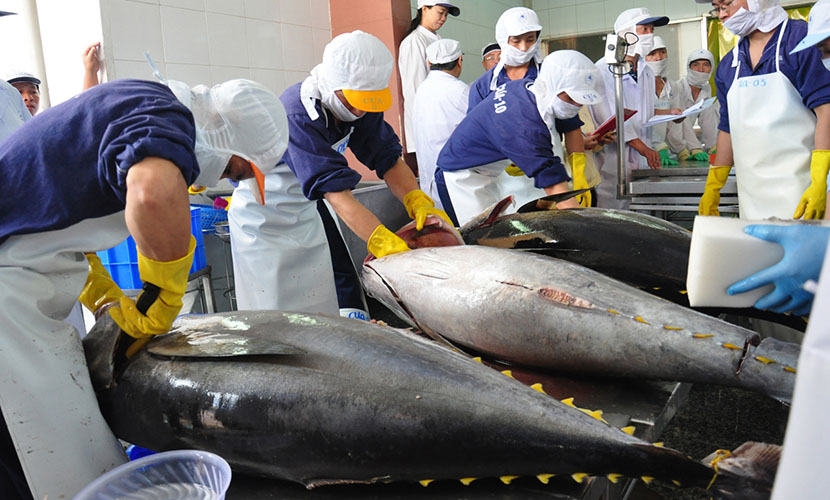
Vietnam’s seafood exports are strongly recovering, reaching over $8.3 billion in the first nine months of the year. They potentially hit the $11 billion mark by year-end, the highest level in the past three years.
According to VASEP, export revenue of Vietnamese seafood in September reached nearly $991 million. This value went up 7.5% compared to the same period last year. For the first nine months of the year, total exports reached $8.33 billion, a 15.5% increase.
Among Vietnam’s seafood exports, shrimp continues to lead with nearly $3.4 billion in export value, up 20%. The U.S., Japan, and the EU showed stable demand, as well as expanded orders in Asia. Pangasius (tra fish) exports exceeded $1.6 billion, up nearly 10%.
Exports of marine fish, squid – octopus, and shellfish also increased. Meanwhile, tuna exports slightly declined to $705 million due to fierce competition in ocean markets.
Experts stated that the seafood industry has shown positive growth this year despite adverse weather conditions and global economic fluctuations. Under their estimate, the target of reaching $11 billion in export revenue is entirely achievable.

Vietnam’s seafood exports
Total seafood output in the first nine months reached approximately 7.72 million tons. In which, there are 1.3 million tons from aquaculture and about 1.8 million tons from capture fisheries. Vietnam has advantages stem not only from its natural conditions but also from its growing processing capabilities and increasing value-added production.
However, the industry continues to face major challenges from “yellow card” warning from European countries. It affects both the reputation and cost of exports. This as a “stress test” that forces the industry to undergo significant reform, much like it did when previously meeting international standards such as HACCP or Globalgap.
Additionally, from January 1, 2026, some of Vietnam’s fisheries may face export restrictions to the United States under the Marine Mammal Protection Act (MMPA) for failing to meet conservation standards. The affected species may include tuna, swordfish, squid, grouper, crab, and mackerel.
To address these issues, VASEP emphasized the need for the industry to shift toward transparency and sustainability. The focus should be on digitizing the supply chain to control raw material sources. Also, expanding the number of certified fishing ports, and completing a unified legal framework for more effective fisheries management are the immediate tasks.
Aligning with the direction of enhancing transparency and global integration, the two international exhibitions, VietShrimp Asia 2026 and Aquaculture Vietnam 2026, will be held concurrently in Ho Chi Minh City in March. These events will serve as an opportunity for Vietnam’s seafood sector to assert its position, connect with partners, and expand its markets.
Vietnam was chosen to host these major industry exhibitions due to its large production scale and improving technological capabilities. She hopes the events will not only showcase modern, eco-friendly technologies but also provide a platform for businesses, regulators, and farmers to exchange solutions for improving quality and aiming for sustainable exports.
Vietnamese source: https://vnexpress.net/xuat-khau-thuy-san-co-the-dat-11-ty-usd-nam-nay-4949863.html
